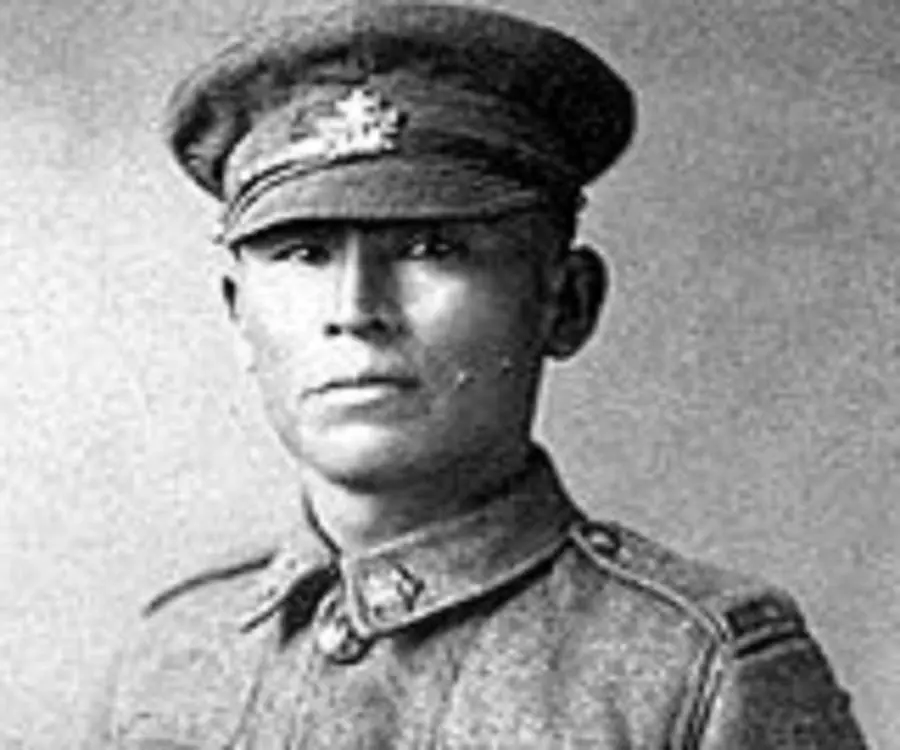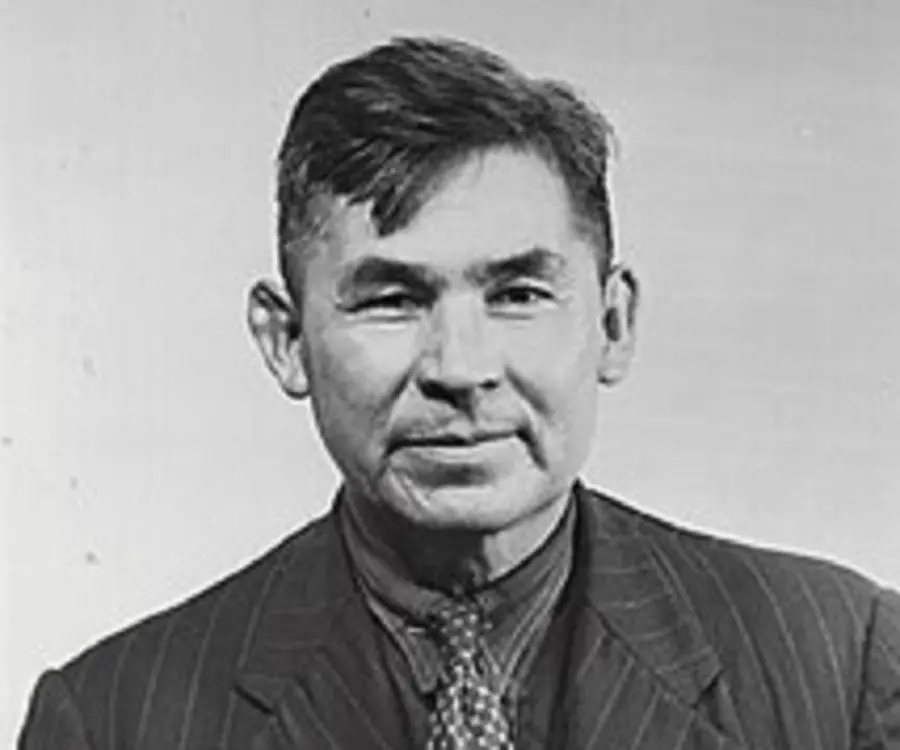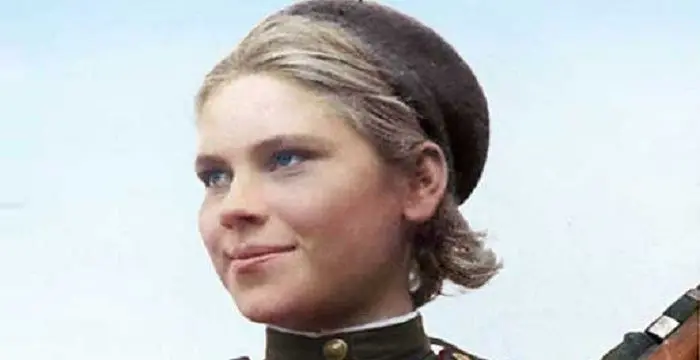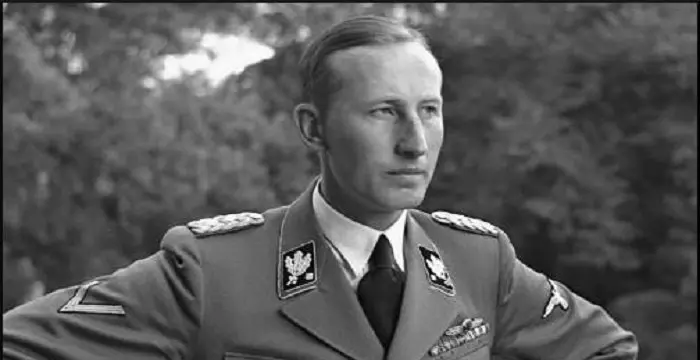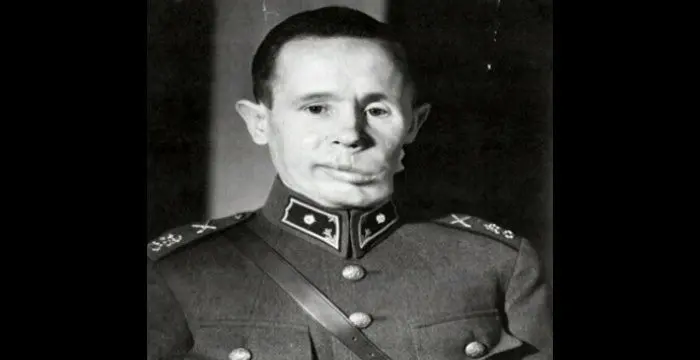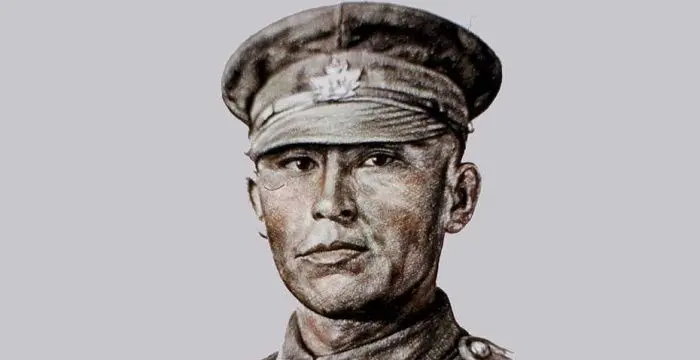
Francis Pegahmagabow - Marksman, Family and Childhood
Francis Pegahmagabow's Personal Details
Francis Pegahmagabow was a marksman, who fought for the allied forces, as a sniper, against the Germans in the World War I
| Information | Detail |
|---|---|
| Birthday | March 8, 1889 |
| Died on | August 5, 1952 |
| Nationality | Canadian |
| Famous | Miscellaneous, Soldiers, Marksman |
| Nick names | Peggy |
| Birth Place | Parry Sound, Ontario |
| Gender | Male |
| Father | Michael |
| Mother | Mary Contin |
| Sun Sign | Pisces |
| Born in | Parry Sound, Ontario |
| Famous as | Marksman |
| Died at Age | 63 |
Francis Pegahmagabow's photo
Who is Francis Pegahmagabow?
Francis Pegahmagabow was a marksman, who fought for the allied forces, as a sniper, against the Germans in the World War I. His first overseas deployment was with the ‘1st Canadian Infantry Battalion,’ which was the first Canadian contingent sent to fight in Europe. He participated in the Battle of the Somme and was wounded in the leg. He recovered soon enough to join his battalion and was awarded the ‘Military Medal’ for his gallant actions. During the Second Battle of Passchendaele, he was assigned the important task of linking up with the flanking unit and guiding reinforcements, for which he earned a bar to the ‘Military Medal.’ He earned his second bar to the ‘Military Medal’ during the Battle of the Scarpe, for venturing into “no man’s land” under enemy fire in order to retrieve ammunition for his post that was under siege. After the war, he was elected as the chief of the ‘Parry Island Band’ and was re-elected for a second term. However, he resigned due to internal politics. Later, he was appointed as a councilor and served for three years, during which he championed the cause of the ‘First Nations’ war veterans. He will be remembered as a skilled soldier and has been included in the ‘Indian Hall of Fame’ at the ‘Woodland Centre’ in Ontario.
// Famous Soldiers
Roza Shanina
Roza Shanina was a Russian sniper who came to be known as “the unseen terror of East Prussia” during World War II. Find more about her childhood, family, personal life, etc.
Reinhard Heydrich
Reinhard Heydrich was a high-ranking German Nazi official during the World War II. Check out this biography to know about his childhood, family life, achievements and other facts about his life.
Simo Häyhä
Simo "Simuna" Häyhä was a Finnish sniper, considered the most deadly sniper in war history. Find more about his family, childhood, personal life, career, achievements, etc.
Childhood & Early Life
He was born on March 8, 1889, in Parry Sound, Ontario, Canada, to Mary Contin and Michael. His parents were Ojibwe from the ‘First Nations.’ His father died of an unknown disease when he was 2 years old, and his mother returned to her native ‘First Nations’ home. She also suffered from the same disease and died later.
He was raised in Shawanaga by Noah Nebimanyquod. He soon picked up traditional skills such as fishing, hunting, and horse riding. Francis learnt the use of traditional medicine from his foster mother and practiced a mix of traditional Anishnaabe spirituality and Catholicism. He was conscious of his roots and proudly displayed the symbol of his clan, the deer. He learnt to play the traditional music of his community, like the rest of his clan.
He gained a scholarship to cater to his boarding and education, after which he worked as a firefighter with the ‘Department of Marine and Fisheries,’ in 1912. He suffered from typhoid in 1913 and was nursed back to health by the ‘Sisters of St. Joseph.’
Despite rampant discrimination against minorities in the army, he volunteered to serve in the ‘Canadian Expeditionary Force’ in August 1914, when World War I broke out. He joined the ‘23rd Canadian Regiment (Northern Pioneers)’ based at the ‘CFB Valcartier.’
Career
His first overseas deployment was with the ‘1st Canadian Infantry Battalion’ of the ‘1st Canadian Division,’ which was the first Canadian contingent sent to fight in Europe. He was popular with his mates and soon became known in his unit as “Peggy.” His first exposure to the front line was in the Second Battle of Ypres, where the Germans used chlorine gas as a weapon for the first time on the Western Front. Pegahmagabow established himself as a valuable member of his unit. His skills as a sniper were praised by all.
He was promoted to the rank of lance corporal and went on to participate in the Battle of the Somme in 1916. He was wounded in the leg during the battle, but recovered soon enough to join his battalion, as they moved to Belgium.
He was recommended for the ‘Distinguished Conduct Medal’ by his commanding officer, for his role in carrying messages during the battle. However, this was downgraded to the ‘Military Medal.’
Pegahmagabow played a significant role in the Second Battle of Passchendaele, where he was assigned the task of linking up with the flanking unit of the ‘1st Battalion’ and guiding reinforcements. He earned a bar to the ‘Military Medal’ and was promoted to the rank of corporal. He earned his second bar to the ‘Military Medal’ during the Battle of the Scarpe in August 1918, for venturing into “no man’s land” under enemy machine gun fire to retrieve ammunition for his post that was under siege. Due to his effort, his battalion was successful in repulsing the enemy attack.
After the war was over, Pegahmagabow returned to Canada in 1919. He earned the reputation of being a skilled marksman with his ‘Ross’ rifle. According to official records, Francis had killed 378 Germans and was instrumental in capturing 300 more.
He was discharged as a lance corporal, after being awarded the ‘1914–15 Star,’ the ‘British War Medal,’ and the ‘Victory Medal.’ He continued to serve in the ‘Algonquin Regiment’ of Canada as a non–permanent member.
In February 1921, he was elected as the chief of the ‘Parry Island Band’ and caused a stir by calling for individuals with mixed race to be expelled from the reserve. He was re-elected in 1924 and served till April 1925, when he resigned due to internal politics.
Later, he was appointed as the councilor and served from 1933 to 1936. During this period, there was a change in policy that banned ‘First Nations’ chiefs from corresponding directly with the ‘Department of Indian Affairs,’ without going through the Indian agents. Pegahmagabow and a lot of the veterans of the war did not get along with the Indian agents, who had become the center of power.
Pegahmagabow termed the system “white slavery” and fought against it. The Indian agents labeled him as a “mental case” and tried to sideline him. He served as a guard in an ammunition plant during World War II, and in 1943, he became the ‘Supreme Chief of the Native Independent Government.’
Awards & Achievements
He earned his first ‘Military Medal’ for displaying courage in the face of the enemy during the second battle of Ypress, Festubert, and Givenchy.
He was awarded a bar to the ‘Military Medal’ in the battle of Passchendaele and a second bar to the medal in the battle of The Scarpe.
He also received the ‘1914–15 Star,’ the ‘British War Medal,’ and the ‘Victory Medal.’
Personal Life
Francis Pegahmagabow was married and had six children. After the war, he lived an active political life and championed the cause of the natives and war veterans. He died of a heart attack at the age of 61, in 1952.
He was respected as a skilled soldier and as a good human being. He was included in the ‘Indian Hall of Fame’ at the ‘Woodland Centre’ in Ontario. The ‘Canadian Armed Forces’ honored him by naming the ‘3rd Canadian Ranger Patrol Group HQ Building’ after him.
In 2003, his family donated his medals and his chief head gear to the ‘Canadian War Museum,’ where it remains displayed with other World War I artifacts.
People have often wondered why he was not awarded higher awards, such as the ‘Victoria Cross.’ Historians claim that this was perhaps because he did not use an observer to verify his kills and may have been discriminated against because of his ‘First Nations’ origins.
Trivia
On ‘National Aboriginal Day,’ June 21, 2016, a life-size bronze statue of Francis Pegahmagabow was installed in Parry Sound, near Georgian Bay. The statue had a ‘Ross’ rifle slung over one shoulder and a caribou at its feet, depicting Pegahmagabow’s actions during World War I and his native clan, respectively.
// Famous Miscellaneous
Jason Simpson
Jason Simpson is the son of former NFL running back, broadcaster and actor O. J. Simpson. Check out this biography to know about his childhood, family, life, and little known facts about him.
Melissa Brim
Melissa Brim is the ex-girlfriend of former professional boxer Floyd Mayweather Jr. Check out this biography to know about her birthday, childhood, family life, achievements and fun facts about her.
Joyce Meyer
Joyce Meyer is a Christian author and speaker. This biography provides detailed information about her childhood, life, achievements, works & timeline
Francis Pegahmagabow's awards
| Year | Name | Award |
|---|---|---|
Other | ||
| 0 | British War Medal | |
| 0 | Victory Medal | |
| 0 | 1914–15 Star | |
Francis Pegahmagabow biography timelines
- // 8th Mar 1889He was born on March 8, 1889, in Parry Sound, Ontario, Canada, to Mary Contin and Michael. His parents were Ojibwe from the ‘First Nations.’ His father died of an unknown disease when he was 2 years old, and his mother returned to her native ‘First Nations’ home. She also suffered from the same disease and died later.
- // 1912 To 1913He gained a scholarship to cater to his boarding and education, after which he worked as a firefighter with the ‘Department of Marine and Fisheries,’ in 1912. He suffered from typhoid in 1913 and was nursed back to health by the ‘Sisters of St. Joseph.’
- // 1914He was discharged as a lance corporal, after being awarded the ‘1914–15 Star,’ the ‘British War Medal,’ and the ‘Victory Medal.’ He continued to serve in the ‘Algonquin Regiment’ of Canada as a non–permanent member.
- // 1914He also received the ‘1914–15 Star,’ the ‘British War Medal,’ and the ‘Victory Medal.’
- // Aug 1914Despite rampant discrimination against minorities in the army, he volunteered to serve in the ‘Canadian Expeditionary Force’ in August 1914, when World War I broke out. He joined the ‘23rd Canadian Regiment (Northern Pioneers)’ based at the ‘CFB Valcartier.’
- // 1916He was promoted to the rank of lance corporal and went on to participate in the Battle of the Somme in 1916. He was wounded in the leg during the battle, but recovered soon enough to join his battalion, as they moved to Belgium.
- // Aug 1918Pegahmagabow played a significant role in the Second Battle of Passchendaele, where he was assigned the task of linking up with the flanking unit of the ‘1st Battalion’ and guiding reinforcements. He earned a bar to the ‘Military Medal’ and was promoted to the rank of corporal. He earned his second bar to the ‘Military Medal’ during the Battle of the Scarpe in August 1918, for venturing into “no man’s land” under enemy machine gun fire to retrieve ammunition for his post that was under siege. Due to his effort, his battalion was successful in repulsing the enemy attack.
- // 1919After the war was over, Pegahmagabow returned to Canada in 1919. He earned the reputation of being a skilled marksman with his ‘Ross’ rifle. According to official records, Francis had killed 378 Germans and was instrumental in capturing 300 more.
- // 1933 To 1936Later, he was appointed as the councilor and served from 1933 to 1936. During this period, there was a change in policy that banned ‘First Nations’ chiefs from corresponding directly with the ‘Department of Indian Affairs,’ without going through the Indian agents. Pegahmagabow and a lot of the veterans of the war did not get along with the Indian agents, who had become the center of power.
- // 1943Pegahmagabow termed the system “white slavery” and fought against it. The Indian agents labeled him as a “mental case” and tried to sideline him. He served as a guard in an ammunition plant during World War II, and in 1943, he became the ‘Supreme Chief of the Native Independent Government.’
- // 1952Francis Pegahmagabow was married and had six children. After the war, he lived an active political life and championed the cause of the natives and war veterans. He died of a heart attack at the age of 61, in 1952.
- // 2003In 2003, his family donated his medals and his chief head gear to the ‘Canadian War Museum,’ where it remains displayed with other World War I artifacts.
- // 21st Jun 2016On ‘National Aboriginal Day,’ June 21, 2016, a life-size bronze statue of Francis Pegahmagabow was installed in Parry Sound, near Georgian Bay. The statue had a ‘Ross’ rifle slung over one shoulder and a caribou at its feet, depicting Pegahmagabow’s actions during World War I and his native clan, respectively.
// Famous Canadian peoples
WolfieRaps
Check out all that you wanted to know about WolfieRaps, the famous YouTube Personality; his birthday, his family and personal life, his girlfriends, fun trivia facts and more.
Jessii Vee
Check out all that you wanted to know about Jessii Vee, the famous Canadian Vlogger & YouTube Personality; her birthday, her family and personal life, her boyfriends, fun trivia facts and more.
Riele Downs
Riele Downs is a Canadian-American actress & Musical.ly star. Let’s take a look at her family and personal life including age, birthday, net worth, boyfriends and fun facts.
Jacob Tremblay
Jacob Tremblay is a Canadian child actor. Let’s have a look at his family & personal life including age, birthday, relationships, net worth and fun facts.
Sierra Furtado
Check out all that you wanted to know about Sierra Furtado, the famous YouTube Personality; her birthday, her family and personal life, her boyfriend, fun trivia facts and more.
Nora Fatehi
Nora Fatehi is a dancer, model, and actress of Indo–Arabic descent. This biography profiles her childhood, family, personal life, etc.
Francis Pegahmagabow's FAQ
What is Francis Pegahmagabow birthday?
Francis Pegahmagabow was born at 1889-03-08
When was Francis Pegahmagabow died?
Francis Pegahmagabow was died at 1952-08-05
Which age was Francis Pegahmagabow died?
Francis Pegahmagabow was died at age 63
Where is Francis Pegahmagabow's birth place?
Francis Pegahmagabow was born in Parry Sound, Ontario
What is Francis Pegahmagabow nationalities?
Francis Pegahmagabow's nationalities is Canadian
What is Francis Pegahmagabow nick names?
Francis Pegahmagabow's nickNames is Peggy
Who is Francis Pegahmagabow's father?
Francis Pegahmagabow's father is Michael
Who is Francis Pegahmagabow's mother?
Francis Pegahmagabow's mother is Mary Contin
What is Francis Pegahmagabow's sun sign?
Francis Pegahmagabow is Pisces
How famous is Francis Pegahmagabow?
Francis Pegahmagabow is famouse as Marksman
